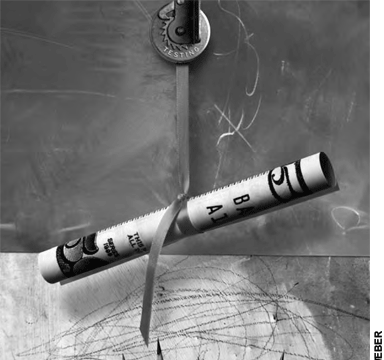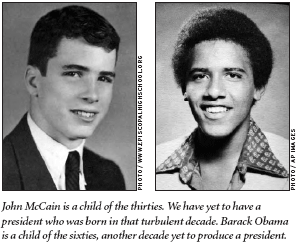
Professors are constantly asked if their students are better or worse today than in the past. I conducted an experiment to try to answer that question for one group of students.
For my fall 2006 course, Calculus I for the Biological and Social Sciences at Johns Hopkins University (JHU), I administered the same final exam I had used for the course in the fall of 1989. The SAT mathematics (SATM) scores of the two classes were nearly identical, and the classes contained approximately the same percentage of the Arts and Sciences freshman class.
The content of the calculus I course had not changed and, from a math standpoint, using the old exam was completely appropriate.
The average exam score for my 2006 calculus I class was significantly lower than for my 1989 class. Comparing the effects of scaling in the two years reveals the extent of the decline. In my 1989 class, 27 percent of students received As on the test and 23 percent Bs. When I graded my 2006 class on my 2006 scale, 32 percent received As and 37 percent Bs. But if I instead graded my 2006 class on the 1989 scale, only 6 percent would have received As and 21 percent Bs. If I graded the 1989 class on the 2006 scale, 52 percent would have received As and 26 percent Bs.
Why did my 2006 class perform so poorly? With the proliferation of AP calculus in high school, one might think that the good students of 2006 place out of calculus I more frequently than did their 1989 counterparts. However, in 1989, 30 percent of the Arts and Sciences freshmen either took the harder engineering calculus course or a higher level mathematics course (calculus II or III, linear algebra, or differential equations). The percentage in 2006 is only 24 percent.
I am inclined to conclude that the 2006 JHU students are not as well prepared as the corresponding group was in 1989, despite there being significantly more competition to get into JHU today than ever before.
This phenomenon is probably shared with many other universities. The year 1989 is, in mathematics education, indelibly tied to the publication by the National Council of Teachers of Mathematics of the report “Curriculum and Evaluation Standards for School Mathematics,” which downplayed pencil-and-paper computations and strongly suggested that calculators play an important role in K–12 mathematics education. My 2006 students would have been about two years old at the time of this very influential publication, and it could easily have affected the mathematics education many of them received. A 2002 JHU study found that students for whom “in K–12, calculator usage was emphasized and encouraged” had lower mathematics grades in the large service courses.
As it stands, universities have no way of rejecting applicants who do not know arithmetic adequately for college-level mathematics. Since 1994, the College Board has allowed the use of calculators on the mathematics SAT. The College Board’s calculator policy states, “Every question on the SAT Reasoning Test [SATM] can be solved without a calculator; but you will gain an advantage by using a calculator with which you are familiar.” I believe it is precisely this gained “advantage” that causes the SATM to fail universities in the admissions process.
My findings spread like wildfire through the mathematics community. Finally, we have data that confirm what we all thought. The surprise was the general indifference that administrators at JHU had toward the study. This kind of drop in SAT scores would be a crisis, but the news that high-performing students were less prepared for college math than students 17 years earlier didn’t seem to bother anyone, at least not enough to contemplate taking action. I urge universities to join together to negotiate with the College Board for a more appropriate test or to look to an alternative test that adequately gauges mathematics preparation.
W. Stephen Wilson is professor of mathematics at Johns Hopkins University. The unabridged version of the study is available here.




